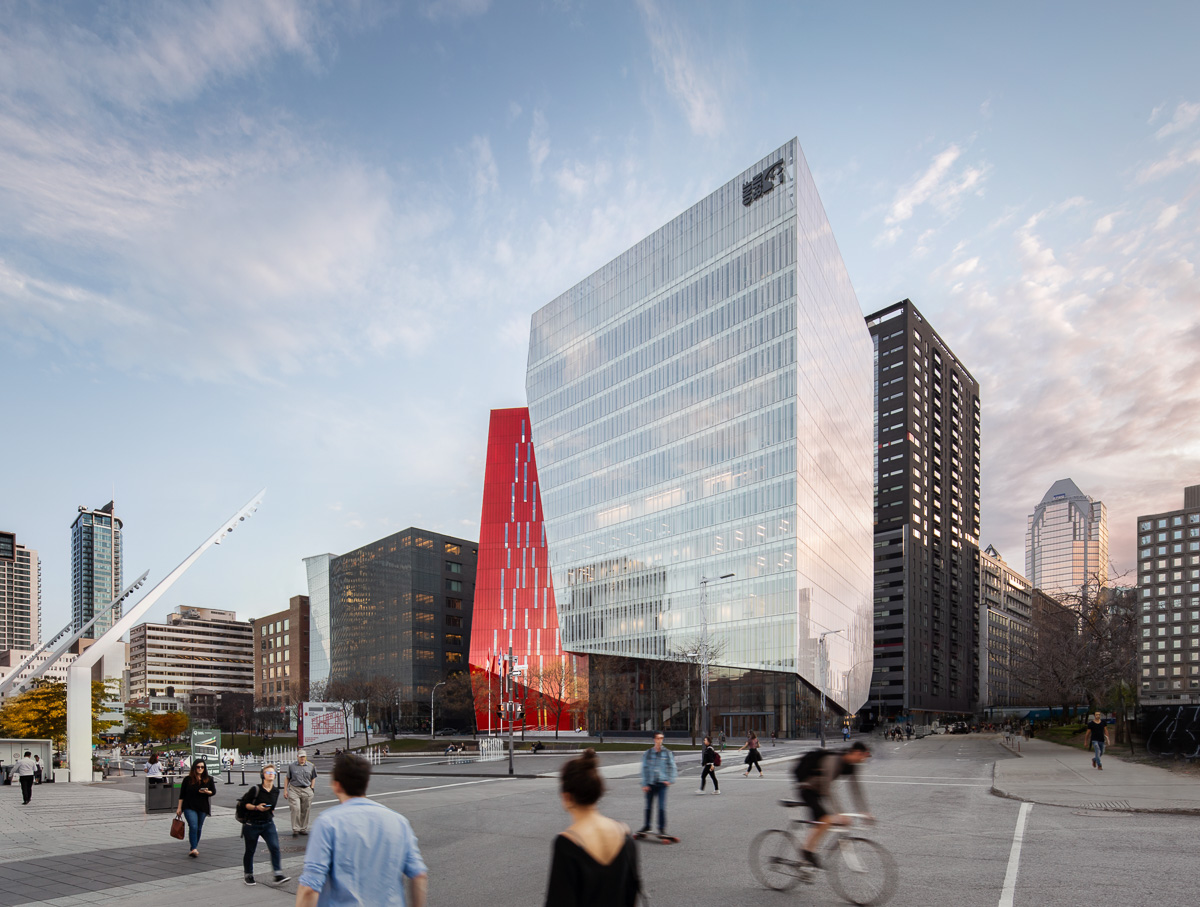
Balmoral_Photo ©2022 Stéphane Brügger for the NFB
Since 2019, the National Film Board of Canada (NFB) has been headquartered at Îlot Balmoral, a flagship building in Montreal’s Quartier des Spectacles. This hub of NFB creation, production and distribution activities, as well as audiovisual technical services, supports artists from the idea to the screen. NFB experts work closely with its six production units and 16 producers stationed across the country, serving filmmakers wherever they may be. As the “eyes of Canada,” the public producer and distributor can uncover stories from every region of the nation and bring them to audiences throughout the country and around the world. These animated and documentary works are internationally acclaimed multiple award winners, attesting to the talent of Canadian filmmakers and artists. They’re also part of an evolving legacy that builds bridges and helps us to see, feel and understand the rich experiences of diverse Canadian communities.
Headquarters and Montreal production units at Îlot Balmoral
National Film Board of Canada
1501 De Bleury Street
Montreal, Quebec
H3A 0H3
Accessible to people with reduced mobility
Place-des-Arts Metro
Contact us by phone from anywhere in Canada:
1-800-267-7710
Contact our production units:
Details and contact information

Its large windows overlooking Place des Festivals—a key cultural hotspot in downtown Montreal—the NFB Space provides a place where the NFB, the general public and industry members can mix and mingle during special events. The state-of-the-art Alanis Obomsawin Theatre can also host selected screenings followed by lively discussions.
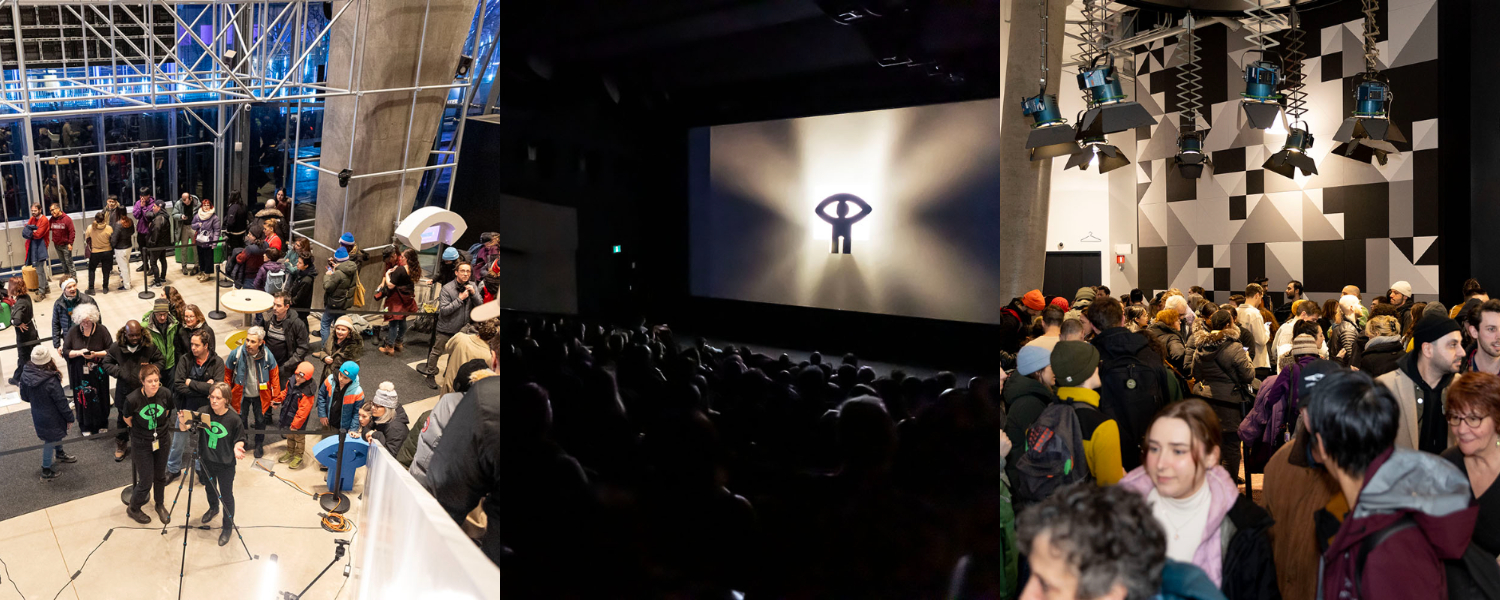
In addition to showcasing local expertise and talent, the NFB’s new head office is a space that’s conducive to creation and in tune with the latest technologies and innovations, serving as a vital meeting point for artists, the public, key collaborators and our in-house experts.
You’ll find the following located on six of the Îlot Balmoral building’s 13 floors:
- Production units where animation and documentaries can be created
- Post-production rooms for mixing and editing
- A lab for experimenting with new technologies
- Archives
- The teams in charge of festivals, national and international sales, marketing, communications, the education market, technical and legal services and online distribution, all working closely with the NFB’s six production units across the country
- The state-of-the-art Alanis Obomsawin Theatre, with 134 seats and four places for people who use a wheelchair, which can accommodate screenings, master classes and other presentations, in addition to serving the NFB’s production needs
- The NFB Space, a direct channel to creation where projects can be showcased, a space where people can meet and exchange ideas, and a range of activities related to festivals and other events can be programmed
As for the NFB’s conservation rooms (a.k.a. “the vaults”) and digitization facilities, they were moved to a new building in the Saint-Laurent borough in the fall of 2019.


The building received 2009 LEED Gold NC certification and is a property of the Société d’habitation et de développement de Montréal (SHDM). Designed by late architect Eugenio Carelli from Provencher Roy, this 13-storey building contains 26,000 square metres of rental space; the NFB’s new headquarters comprises six out of its 13 floors, for a total of 9,800 square metres. The city block gets its name from Balmoral Street, which borders the eastern side of the building.
The lobby, which has entrances on both the east and west sides and connects De Bleury Street with Place des Festivals, was designed as a space pedestrians can freely walk through and was inspired by the route they were taking from Place des Arts Metro to Place des Festivals before construction of the building began.

The NFB Space, a public venue dedicated to exploration, encounters between people and the exchange of ideas, whose immense windows overlook Place des Festivals, can also be accessed through the lobby. A large staircase leads from the main floor to the mezzanine, where the Alanis Obomsawin Theatre is located.
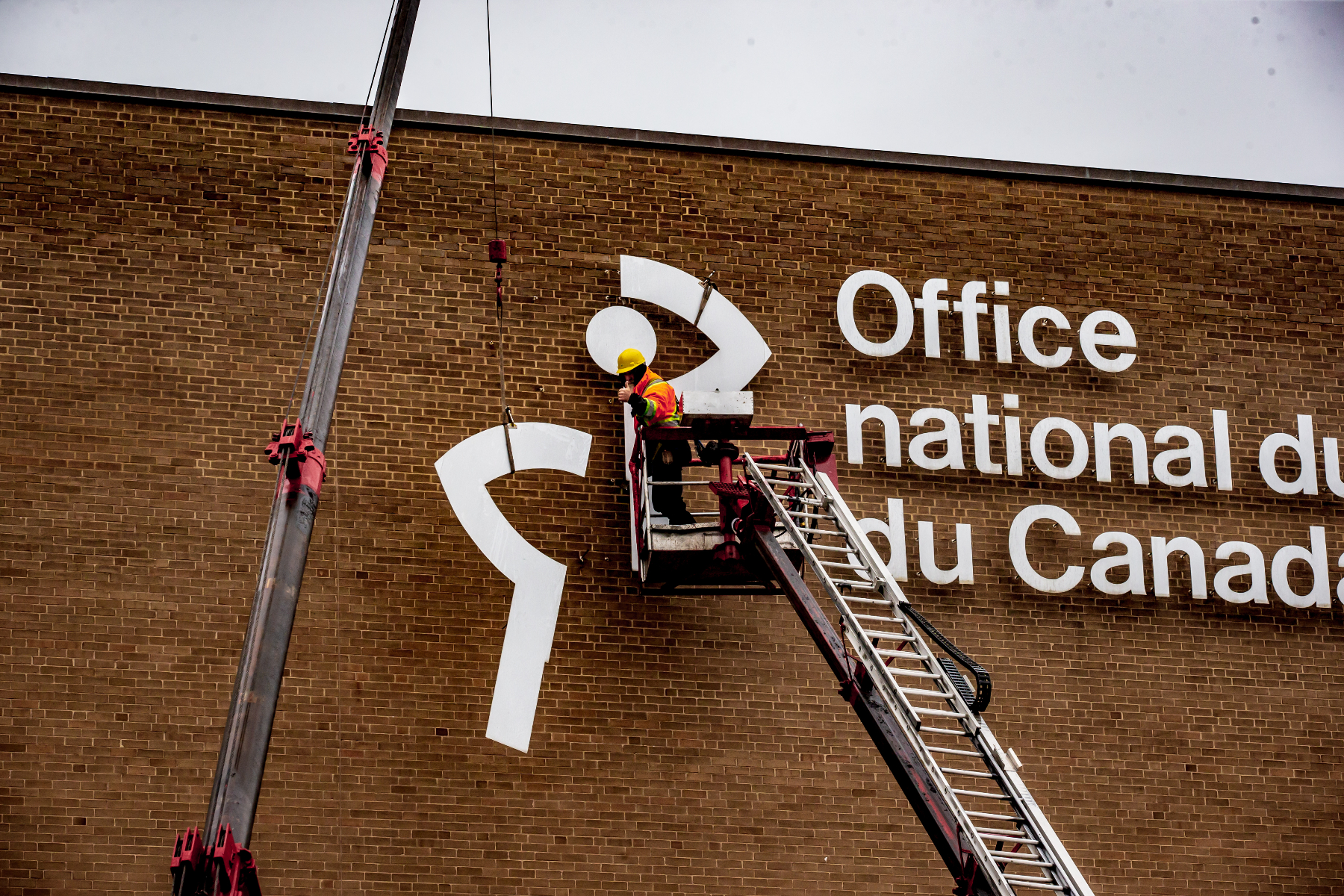
Workers remove the logo at the NFB’s Montreal headquarters in Saint-Laurent on April 24, 2019. Photo by Charles Mercier for the NFB.
Attached to the wall is the exterior logo from the NFB’s former headquarters at 3155 Côte-de-Liesse, serving as a link between past and present.
Îlot Balmoral has become a landmark in the heart of Montreal’s Quartier des Spectacles—a building designed to embody innovation, creativity, and the vitality of the city itself.
1956: A new home at 3155 Côte-de-Liesse Road
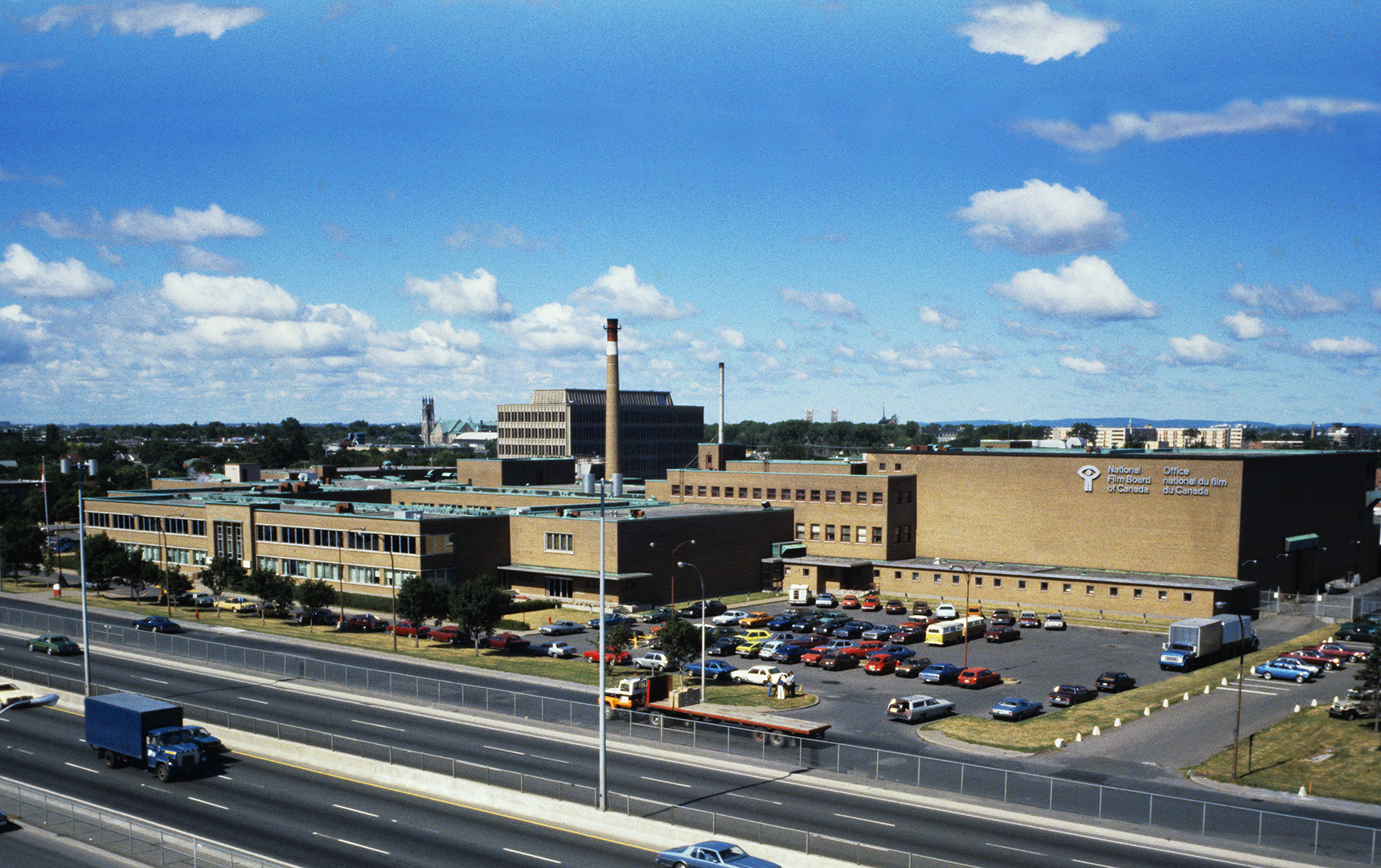
Aerial view of the NFB buildings, including the John Grierson Building, in Montreal’s Saint-Laurent borough, 1980s. © National Film Board of Canada. All rights reserved.
A unique filmmaking complex—the only one of its kind in Canada
The NFB decided to move its Ottawa headquarters to a new space in Montreal to help the organization fulfil its mandate and attract new talent, in particular more francophone directors from Quebec. Moving the head office from Ottawa to Montreal would also give the organization more creative freedom.
The new NFB would be housed in a setting unlike any other in Canada: a fully integrated, world-class film studio—the only one of its kind north of Hollywood—built to the highest industry standards. A facility whose mission was:
… to render a complete motion picture service from the original concept of the film through script, music, animation, editing, photography, sound, laboratory reproductions (both black-and-white and colour), and film distribution through the world. Further, in view of the impact of television and the rapidly changing techniques of theatre exhibition and film production, the facilities had to be flexible.
The Montreal Move, 1955–1956 NFB Annual Report
The move in 1956
In 1956, the move from Ottawa to Montreal was a mammoth undertaking that involved the transfer of 3,000,000 lbs of equipment and other material in 87 van loads. Transporting the equipment alone required more than 92,000 linear feet of lumber, 2,150 carboard boxes and 200 typewriter cases! In the span of a few weeks, more than 400 employees and their families moved to Montreal.
A Classified Heritage Building
The entire complex has been listed as a Classified Federal Heritage Building since 1998, in recognition of the role it played in developing Canadian cinema and bringing talented filmmakers together under one roof—and becoming, in the process, the heart of creative and technical innovation in Canadian film, serving as a driver for the industry as a whole, and developing an international reputation. The main building is named for animation master Norman McLaren. The heritage designation does not apply to Building F (the John Grierson Building, since closed).
1939: Early days in Ottawa
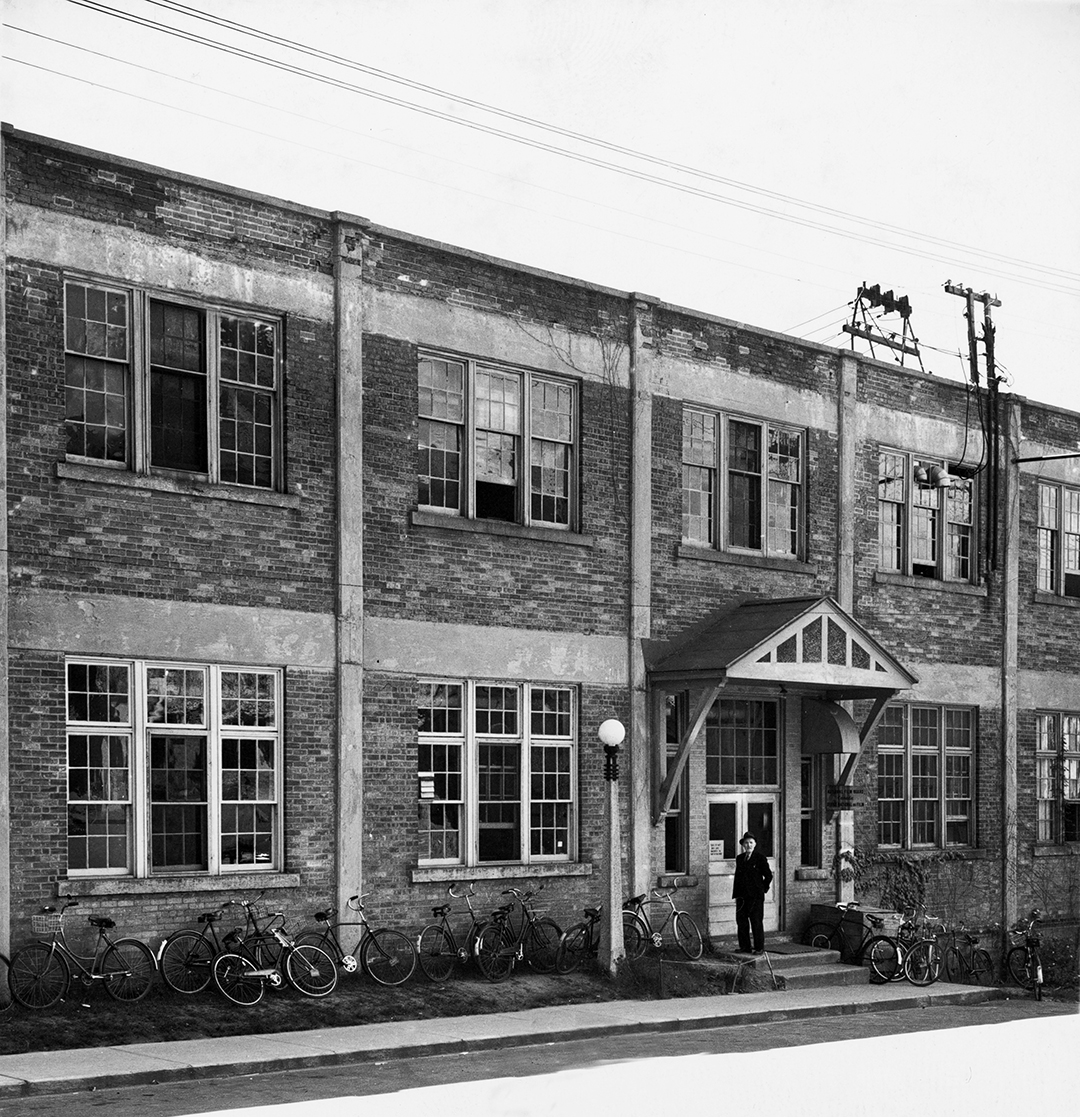
Entrance to the National Film Board’s headquarters located at 25 John Street in Ottawa, October 1953. Photo credit: Douglas Wilkinson. © National Film Board of Canada. All rights reserved.
The NFB was founded in Ottawa in 1939 by John Grierson, with a mandate to produce and distribute films designed to interpret Canada to Canadians and to other nations. The Film Board first occupied a converted lumber mill at 25 John Street, in addition to nine other buildings.
Employees in these buildings had to deal with many technical and health-related challenges, including dust, dirt and the absence of a proper heating and cooling system.
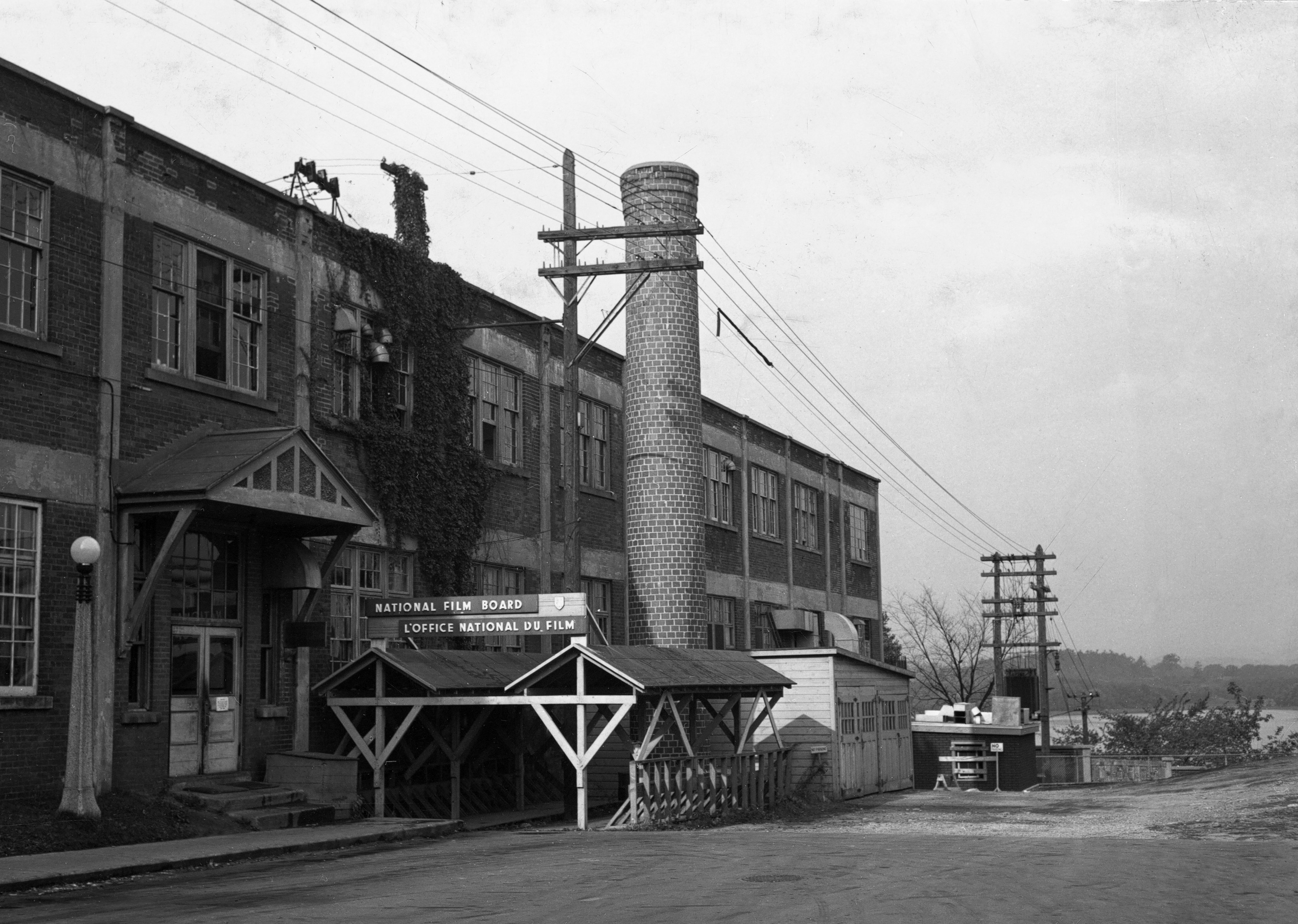
Entrance to the National Film Board’s headquarters located at 25 John Street in Ottawa, October 1947. Photo credit: E. Scott. © National Film Board of Canada. All rights reserved.
But none of that stood in the way of the NFB filmmakers as they crafted documentaries that sought to rally Canadians for the war effort, telling the stories of sacrifices made by soldiers on the front lines and civilians on the home front. The end of the Second World War marked the start of a new era for Canada—and a new set of needs and challenges for the NFB.
Contact the NFB publicist to obtain high-resolution images for printing.